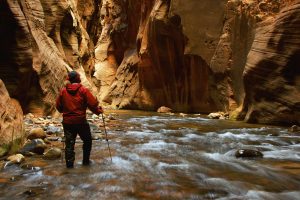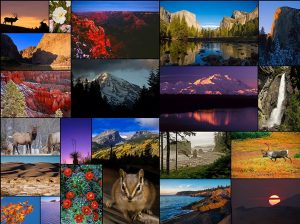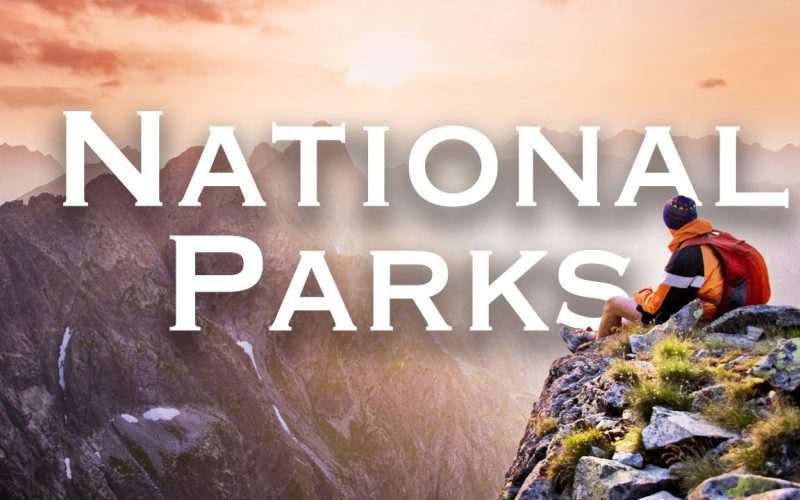Introduction
National parks are some of the most beautiful places in the world. They have amazing landscapes, many kinds of animals, and fun outdoor activities. Whether you love hiking, watching wildlife, or going on scenic road trips, these parks are a great way to escape city life.
With new travel trends, eco-friendly ideas, and more adventure tourism in 2025, now is the perfect time to explore national parks. From tall mountains to lush rainforests, there is a national park for every traveler.
This guide will show you the best national parks to visit in 2025, with highlights of attractions, unique experiences, and helpful travel tips.
What Makes a National Park Special?

National parks are protected areas that show the beauty of nature and culture in a region. These parks are important for:
- Protecting wildlife and endangered species.
- Offering outdoor activities like hiking, camping, and wildlife watching.
- Preserving historical sites and cultural heritage.
- Teaching visitors about nature and the importance of conservation.
Visiting national parks lets you connect with nature while supporting efforts to protect it.
Top National Parks to Visit in 2025

Here are some of the best national parks to explore this year:
1. Yellowstone National Park (USA)
Why Visit?
- Famous for geysers, hot springs, and many types of wildlife.
- The Old Faithful geyser erupts regularly.
- Beautiful landscapes like Yellowstone Lake and the Grand Canyon of Yellowstone.
Travel Tip: Go in late spring or early fall to avoid crowds and enjoy nice weather.
2. Banff National Park (Canada)
Why Visit?
- Gorgeous glacial lakes like Lake Louise and Moraine Lake.
- Great hiking, skiing, and chances to see wildlife.
- The Icefields Parkway drive offers amazing views.
Travel Tip: In winter, enjoy skiing; in summer, explore hiking trails and canoeing spots.
3. Kruger National Park (South Africa)
Why Visit?
- One of Africa’s largest game reserves.
- Home to the Big Five (lion, leopard, elephant, rhino, buffalo).
- Offers both affordable and luxury safari experiences.
Travel Tip: Book a guided safari to see more animals.
4. Fiordland National Park (New Zealand)
Why Visit?
- Home to the famous Milford Sound.
- Beautiful mountains, fjords, and waterfalls.
- Great hiking trails, like the Routeburn Track.
Travel Tip: Take a boat cruise on Milford Sound for the best views.
5. Torres del Paine National Park (Chile)
Why Visit?
- A paradise for hikers and photographers.
- Known for its granite peaks, glaciers, and blue lakes.
- Great for multi-day hikes and seeing wildlife.
Travel Tip: Visit between November and March for the best weather.
6. Serengeti National Park (Tanzania)
Why Visit?
- See the Great Migration of wildebeests and zebras.
- One of the best places for safaris.
- Stunning landscapes from savannahs to woodlands.
Travel Tip: Plan your visit between July and October for the best views of the migration.
7. Plitvice Lakes National Park (Croatia)
Why Visit?
- Famous for waterfalls and clear lakes.
- Beautiful wooden walkways let you see the water up close.
- A UNESCO World Heritage Site with lush forests and wildlife.
Travel Tip: Arrive early to avoid crowds and get great sunrise photos.
8. Great Barrier Reef Marine Park (Australia)
Why Visit?
- The largest coral reef system in the world.
- Amazing snorkeling and diving opportunities.
- Home to over 1,500 species of fish and other marine life.
Travel Tip: Choose eco-friendly tours to help protect the coral reef.
9. Cinque Terre National Park (Italy)
Why Visit?
- A mix of coastal beauty and charming villages.
- Offers hiking, wine tasting, and cultural experiences.
- Stunning views of the Mediterranean Sea.
Travel Tip: The Sentiero Azzurro trail connects all five villages and has amazing views.
10. Jasper National Park (Canada)
Why Visit?
- Known for stargazing and dark sky preserves.
- Activities like wildlife watching, hiking, and canoeing.
- Home to Athabasca Falls and Maligne Lake.
Travel Tip: Visit during the Jasper Dark Sky Festival for amazing stargazing.
The Importance of Conservation
Conservation is vital for protecting the environment, and national parks are key players in this effort. By setting aside land for parks, we can preserve unique habitats and the animals that live there. This protection helps keep ecosystems healthy and allows plants and animals to thrive. National parks act as safe havens where nature can continue to grow and develop without human interference.
Promoting Outdoor Activities

National parks encourage people to enjoy outdoor activities. Visitors can hike, bike, camp, and explore nature in these beautiful areas. Many parks offer guided tours and educational programs that help people learn about the environment. These activities not only provide fun and adventure but also help people appreciate the beauty of nature and understand the importance of protecting it.
Building Community Connections
National parks often bring communities together. Local residents, park rangers, and visitors can work together to support conservation efforts. Many parks organize events, such as clean-up days or volunteer programs, where people can help maintain the park. These activities foster a sense of community and encourage people to care about their natural surroundings.
Engaging the Next Generation

To ensure the future of national parks, it is essential to engage younger generations. Teaching children about the importance of nature and conservation helps them appreciate the environment. Many parks offer programs specifically designed for kids and families, such as ranger-led activities and educational workshops. By inspiring young people to love and protect nature, we can create a lasting commitment to conservation and a brighter future for our national parks.
Challenges Facing National Parks
Despite their benefits, national parks face several challenges. Climate change is affecting weather patterns, wildlife, and plant life. Overcrowding can lead to damage to trails and natural areas. Additionally, funding for park maintenance and conservation can be limited, making it hard to protect these beautiful places.
The Future of National Parks

The future of national parks looks promising, but there are important steps to take. More people are recognizing the need for conservation and sustainable tourism. Parks may focus on eco-friendly practices, helping to reduce their environmental impact. As technology advances, parks could use new tools for conservation efforts and visitor experiences. By addressing challenges and promoting awareness, national parks can continue to thrive for generations to come.
Comparative Table: Best National Parks Based on Activities
| National Park | Best For | Best Time to Visit |
|---|---|---|
| Yellowstone (USA) | Geysers, Wildlife, Hiking | Spring, Fall |
| Banff (Canada) | Scenic Drives, Skiing | Year-round |
| Kruger (South Africa) | Safari, Wildlife Viewing | May – September |
| Fiordland (New Zealand) | Fjords, Hiking | November – April |
| Torres del Paine (Chile) | Trekking, Photography | November – March |
| Serengeti (Tanzania) | Great Migration, Safari | July – October |
| Plitvice Lakes (Croatia) | Waterfalls, Photography | Spring, Fall |
| Great Barrier Reef (Australia) | Diving, Snorkeling | June – October |
| Cinque Terre (Italy) | Coastal Views, Culture | Spring, Fall |
| Jasper (Canada) | Stargazing, Wildlife | October (for Dark Sky Festival) |
This table helps travelers choose the best national park based on what they like to do.
Conclusion
Exploring national parks in 2025 is a great way to enjoy nature, adventure, and beautiful landscapes. Whether you like hiking, safaris, diving, or cultural experiences, there is a park for everyone.
By planning ahead, choosing eco-friendly travel options, and following park rules, you can enjoy your visit and help protect these amazing places.
Call to Action
Which national park do you want to visit in 2025? Share your travel plans in the comments or start planning your next adventure today!











